When I was in senior high school (thirty looong years ago) I had an appointment with a career counsellor. I had an aptitude for art and was interested in science.. Based on these two pieces of information he told me that I should pursue a career in computer art.
I laughed in his face.
You must understand that at the time computer art was nothing more than 8-bit images horrendously pixilated. It was the artistic equivalent of a freak in a freak-show. It was the dog-faced-boy of the world of art.
 You see, I wanted to be a fantasy artist. I wanted to paint just like my heroes, Frank Frazetta and Boris Vallejo. I wanted to produce works of wonder and imagination like the Brothers Hildebrandt or Michael Whelan.
You see, I wanted to be a fantasy artist. I wanted to paint just like my heroes, Frank Frazetta and Boris Vallejo. I wanted to produce works of wonder and imagination like the Brothers Hildebrandt or Michael Whelan.
In order to do that, as everyone knew at the time, you had to know how to paint in oils or at least acrylics. Back then no one painted in pixels. The very idea was ludicrous and beneath contempt.
My mother was an oil painter. She painted landscapes. I was adept with a pencil and with pen-and-ink, but for some reason I couldn’t wrap my head around painting with oils. My mother was also good at watercolours and I discovered that I could combine those with my pen-and-ink work to produce passable images. But the oil paints were, as far as I was concerned, the only way to produce the images that I wanted to produce.
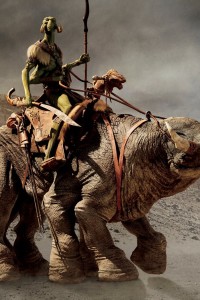 As with everything, things change. In the world of computer technology, things change very quickly and improve exponentially.
As with everything, things change. In the world of computer technology, things change very quickly and improve exponentially.
Graphic quality improved. In 1987, Thomas Knoll, a PhD student at the University of Michigan began writing a program on his Macintosh Plus to display grayscale images on a monochrome display. This program, called Display, caught the attention of his brother John Knoll, an Industrial Light & Magic employee, who recommended that Thomas turn it into a full-fledged image editing program.
Thus Photoshop was born. In the wake of Photoshop came Corel Painter, a raster-based digital art application that emulates the visual characteristics of traditional media, such as oil paint, pastel sticks, air brush, etc.
Now, I adopted these programs quite enthusiastically. For an artist such as myself, who is not as meticulous as I should be, who does not have the room or the resources to be slapping actual paint onto actual canvas, these programs were a godsend.
 But then the floodgates opened. The ability to render images improved and soon computer specialists were able to marry that ability with the ability of the computer to animate those images within a virtual space. Thus was CGI — computer generated images — born.
But then the floodgates opened. The ability to render images improved and soon computer specialists were able to marry that ability with the ability of the computer to animate those images within a virtual space. Thus was CGI — computer generated images — born.
Now, back when I laughed in my high school career counsellor’s face, my greatest nightmare would have been that a computer could create images better than an actual artist. The idea that a computer could spontaneously create art was as incredible an idea that a chimpanzee could recreate the Mona Lisa using its own feces. It simply could not happen and even if it did it would be an anomaly, an oddity, not to mention disgusting.
Flash forward to today. The nightmare is real. Computers generate images. They animate them and they are displayed with absolute photographic realism. They are displayed on the screens of your local cinemas in 3D, no less.
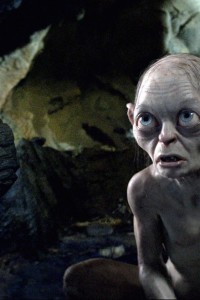 It used to be that motion picture visual effects was a poor cousin to the finest of fantasy and science fiction art. No longer. With CGI Hollywood has outstripped the wondrous science fiction and fantasy art that used to grace the covers of our favourite books and magazines.
It used to be that motion picture visual effects was a poor cousin to the finest of fantasy and science fiction art. No longer. With CGI Hollywood has outstripped the wondrous science fiction and fantasy art that used to grace the covers of our favourite books and magazines.
There is more artistry in one single frame of Peter Jackson’s The Hobbit, for instance, that in all the images of Middle Earth produced by the Brothers Hildebrandt. There is more amazing wonder packed into a single frame of Star Trek Into Darkness that there is on all the covers of the ACE science fiction reprints. There is more superhero action in a single frame of The Avengers than an entire page of the comic book.
Of course, the movies employ teams or artists. They have entire office buildings full of talented artists working around the clock in near sweat-shop conditions to produce these frames. Next time you watch a blockbuster, effects laden flick stay in your seat during the closing credits and see how many names are listed in the effects or compositing department. It is a virtual army of designers, artists and technicians brought together to produce these images.
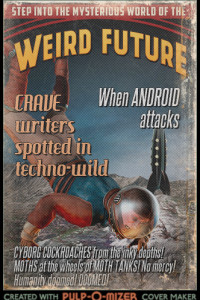 How is a single artist expected to top that? How am I supposed to produce an image that gets noticed when I am up alongside not only images produced by artists who are more talented than I am (there are many — sooo many) but also with images produced by armies of talented artists, effects technicians and computer programmers on equipment that is state-of-the-art or better?
How is a single artist expected to top that? How am I supposed to produce an image that gets noticed when I am up alongside not only images produced by artists who are more talented than I am (there are many — sooo many) but also with images produced by armies of talented artists, effects technicians and computer programmers on equipment that is state-of-the-art or better?
It would drive me to drink if I weren’t already inclined that way to begin with.
And to add insult to injury, there are now sites where anyone can go and get an almost-custom CGI image. Sites like the PULP-O-MIZER, a site where you can combine pre-rendered CGI images together to create your own sf pulp style cover images. Sure, it’s neat, but that’s probably taken more than one job out of my hands. Thanks CGI. Thank you so much!
So what is a struggling artists to do? Continue rolling the stone up the hill like Sisyphus? I just need to keep struggling, to keep plugging away and hope that somewhere there is a niche that only I — only my particular talents — can fill completely.
Then do the best damn job that I can.
Anybody need some fantasy or science fiction art done? My rates are reasonable?
M. D. Jackson has been drawing since he could first hold a pencil. He has been writing for so long that he has, in fact, developed an alternate personality named Jack to handle the fiction.
His work has appeared in numerous magazines and on the front covers of many books as well as in the pages of Amazing Stories Magazine. You can also see a lot of it at his gallery.



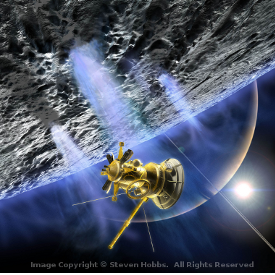


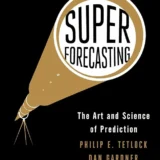




Well, there is a reason I have Van Gogh’s “Bulb Fields” as my desktop and not some random fantasy-scape photoshopped over a stock image. Art is so much more than photorealism, and I think the more that technology bridges the gap between vision and technical ability, the more apparent this becomes.
Well, three points:
1. Of all the things that matter when the dust settles and a picture is done, what tools you used is just about the least important thing. You have to have something to say and show; you have to be skilled with the tools you use. Those are the important things. You make pictures. You don’t make techniques.
2. The Pulp-O-Mizer isn’t taking any jobs away from you, or shouldn’t be, because one of its two rules is that Pulp-O-Mized images are not to be used in commercial projects.
3. And whether you like or or hate it, the Pulp-O-Mizer is also a refutation of one of your points – the one that goes “How is a single artist expected to top that?” Because even though a Hollywood film uses a seething army of modelers, texture artists, animators and lighting specialists, the Pulp-O-Mizer’s image layers are the work of a single artist.
I disagree that CGI is photorealistic or in any way better than actual art. This is not to say that images can’t be created digitally that are just as good or artistic as those made with traditional materials.
What I mean is that you can always, always, tell those pieces of film that have CGI inserted into it. It’s better now than it used to be, but the eye can tell. The CGI is “too real”, too perfect and thus not realistic at all. And that is only when the designers get it right. There are still problems with making realistic walking motions and facial expressions.
As masterful as Serkis’s performance of Gollum was, and as much as a technical triumph the rendering might have been, the film would have been much better served by using traditional make-up and costuming.
Then there is George Lucas syndrome where everything is CGI whether or not it needs to be. Abrams’s Star Trek movies (which are terrible as Star Trek and only mediocre as science fiction) fall into this category, lens flares aside.
I would much rather see the art inherent in make-up, costumes, models and miniatures in films than the “mind-blowing” CGI that keeps being pushed into my eyes. When done right, CGI can be wonderful, and some films take great advantage of it such as Europa Report and the upcoming Gravity.
A good model shot in films still goes a long way. Just look at Duncan Jones’ MOON – barely any CGI in there. And it’s brilliant.
I have to see Moon one of these days! I also have to say, I’m sure you have plenty of people who enjoy your art! My favorite so far is The World Outside. Speaks to me, I guess ^,^
Thank you Sylvia, that is very much appreciated! “The World Outside” is one of my favourite paintings – I managed to realise my own vision, which doesn’t always happen!
It is actually a painting to go with a song I wrote, and the painting was eventually used it as the cover to my album “Future Worlds” https://thelightdreams.bandcamp.com/album/future-worlds
Breakthroughs in makeup and CGI help get us movies like Pan’s Labyrinth, though! If I can build on what you said about relying too much on CGI, I believe movie people are so wrapped up in blowing our minds that they forget their job is tricking them into believing things are happening in front of us. I don’t think we’re not ready for characters like Gollum because of technology shortfalls. It feels like they just forget about makeup and practical costumes when they decide to use CGI.
I haven’t seen Gravity yet! How is it?
The late John Berkey’s work is a fine example – it’s astoundingly good. Vast scale, great drama, vibrant colour; yet his style is very much painterly and linear. Almost rough in places. While a lot of attention is paid to the architecture of the ships and buildings in his painting, they don’t have the fine, intricate detail that you find in CGI, but they’re just so much more evocative and timeless.
Hand painted art, digital or traditional, is timeless, whereas rendered CGI is only as good as the technology at the time.
Give me beautifully rendered animation from Disney circa 1940-1970 over the typical CGI of today any day of the week! Where can we find your art? I’d love to see it. ^,^
My sentiments exactly. CGI has become totally realistic looking and breathtaking. It is its own genre, and it has transformed cinema, where it has found its true calling, to seemlessly blend the impossible with reality.
But is it art? Personally, I don’t think it is. it may be the most epic image you’ve seen, but to me, all this stuff lacks soul and personality. The touch of an artist’s hand, whether digital art or traditional medium is something that animated CGI doesn’t have.
If we’re talking pieces of artwork or book covers, give me something with that artistry any day, even if there are imperfections. In the late 90s and early 00s, ‘digital art’ pretty much meant your rendered 3D stuff – but in recent years, that’s all changed. There are so many great artists out there now painting digitally.
Of course, there in lies the greater problem to wannabe artists such as myself – the internet is swamped – packed to the rafters – with people all trying to do the same thing and get seen.
I came to a career crossroads a few years ago, and rekindled my adoration for the SF and space art of the 70s and 80s… David A Hardy, Chris Moore, Tim White etc, and after a ten year gap, picked up where I’d left off years before, finally painting my own science fiction environments. And it’s something I love to do.
And I’ve chosen to continue slaving away on my own artwork, hoping to get seen and for that lucky break. It only takes one person to really love your stuff, and who knows where that can lead.
Right, one person, where are you?? 😉